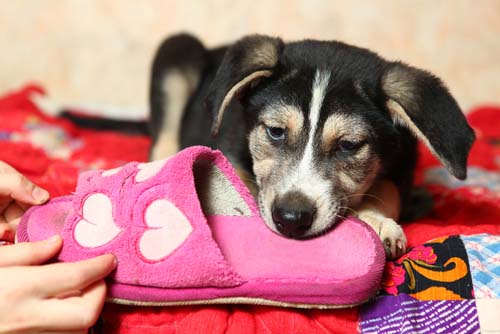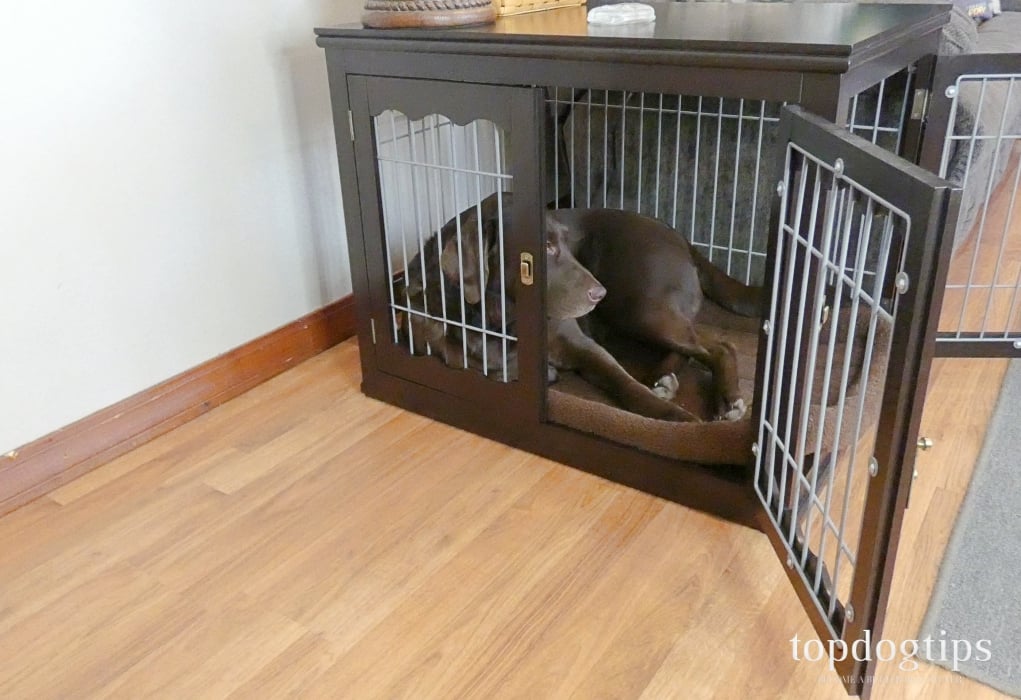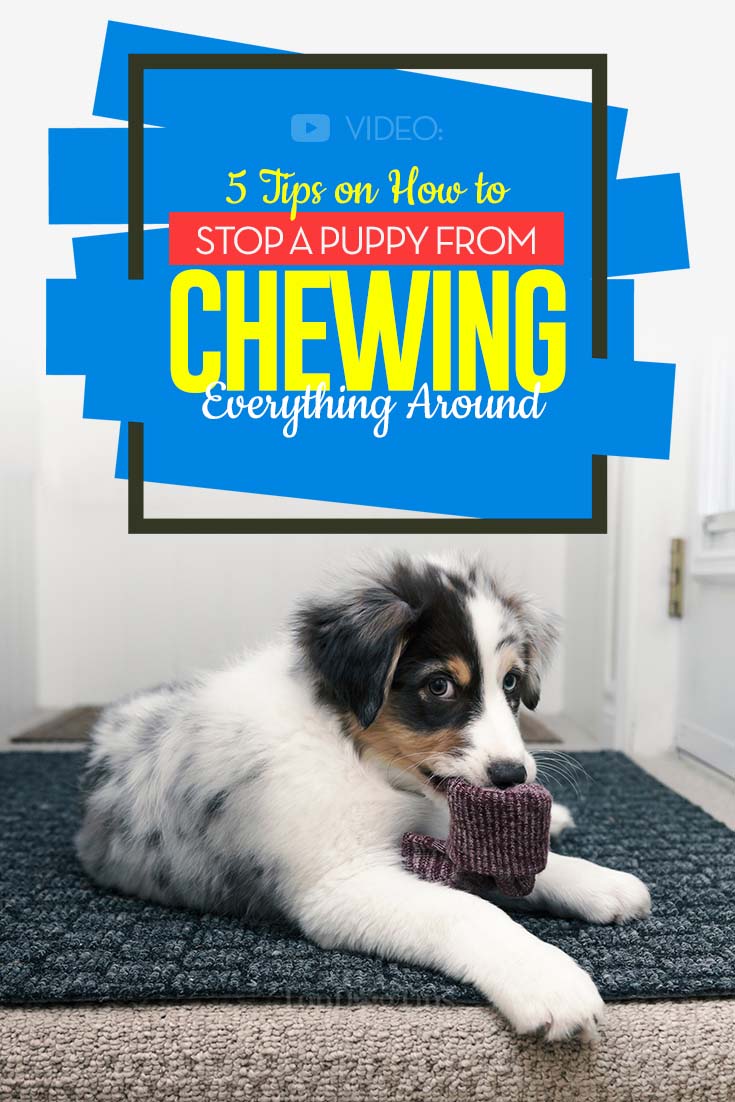It seems when you take your eyes off your puppy for just a few minutes, they'll chew up your stuff and go to the bathroom on your floor. A chewing puppy means expensive replacements, so learning how to stop a puppy from chewing everything will save you hassle in the future.
Excessive chewing can also be a hazardous pass time for dogs. Your pet runs the risk of choking, ingesting toxic or dangerous items like electrical cords, which means costly vet bills or permanent health issues. Veterinarians have removed many odd objects from puppies' digestive tracts before.
Learning how to stop a puppy from chewing everything around is not difficult, but it will take time and some patience. Here's my step-by-step guide to help you succeed.
RELATED: How to Discipline a Puppy Properly and Humanely
How to Stop a Puppy from Chewing Everything
1. Puppyproof Your House
Before you even bring your new puppy home, start taking preventative steps to stop a puppy from chewing things around your house. Puppy-proofing a home, which is similar to baby-proofing, should be first step.
Think like a puppy. Look around your home for things that your dog could get into:
- Secure all electrical cords using cord covers.
- Put away any medications or cleaning supplies.
- Make sure garbage is unreachable (use dog-proof cans)
Do you have house plants or seeds, or a full garden? Look through this list for types of plants that you're growing, and make sure that they are not toxic to dogs. This is especially important for backyard outdoor flower gardens.
Note the items dogs choke on most often. Keep children's toys (one of puppies' favorites and also very dangerous), shoes, and similar objects that may entice a puppy to chew up off the floor. If you have kids, teach them how to stop a puppy from chewing everything, too, and especially not to encourage such behavior.
2. Offer a Variety of Safe Chews and Puppy Toys
Puppies are energetic and they get bored easily. They need a variety of puppy toys and chews that will stimulate them mentally and help with the pain of teething. Every dog has different chewing preferences, and you need to figure out what your dog likes.
Keep plenty of puppy toys available: plush toys, tough rubber toys and nylon chews are all good options. It's also important to keep these toys always in the same place which is also easy for a puppy to access. When a dog cannot get to their dog toys, they'll seek and find one of your belongings to chew on instead.
With very young puppies, it's best to supervise them while they're chewing on anything, at all times. Sharp puppy teeth can cut through even the most durable dog toys. If your pup is able to break off a small piece, they are likely to swallow it and choke on it, or cause an intestinal blockage.
3. Use Redirection as a Training Tool
Redirection is one of the simplest, yet most straightforward and very effective methods of dog training. Redirection can be used to stop an unwanted behavior in puppies, and get your dog focused on the behavior that you want to see.
Redirection training in dogs should be your first method when learning how to stop a puppy from chewing everything. As I demonstrate in my video, redirection is exactly what it sounds: a simple process of redirecting a puppy from an inappropriate behavior and showing them what is acceptable instead.
When your dog is chewing something they shouldn't, like a shoe, then:
- Take the item away from the dog.
- Firmly and clearly say the command, “No!”
- Then replace it with an appropriate item (e.g. dog toy).
Never punish your puppy for inappropriate behavior because this will only make your training harder. Use redirection alone – you'll be glad you did after a little patience.
4. Optional: Crate Train a Puppy
Some new puppy owners believe that using a dog crate and then crate training a dog is inhumane, but that is not always the case. Sometimes, crate training is needed, and if done properly, a puppy will actually enjoy being in a crate. It will give them a comfortable, cozy and safe space to relax in.
You need to start crate training puppies as soon as you adopt them. A puppy should be getting used to their new crate from day one, so it's important that you know what you're getting into before you adopt a dog. The process is fairly simple (watch this and then read more here, here and here) and will only take a little time. You will need to set a puppy crate training schedule and stick with it.
5. Burn Off Puppy's Extra Energy
My final tip on how to stop a puppy from chewing everything around is to tire them out and burn off all of that extra puppy energy. Puppies are more energetic than adult dogs, and can quickly get bored. A bored puppy with lots of energy is bound to chew things that they aren't supposed to simply to entertain themselves.
Find out what your dog likes to do:
- Does the dog enjoy going for long walks and exploring?
- Do they like to a game of fetch or play tug of war?
- Do they enjoy the process of dog training and general exercise?
- Or maybe your pup would enjoy playing with treat dispensing toys or puzzles.
Figure that out, and make sure you let your puppy play and get tired. Chewing in puppies is a way for them to entertain themselves but once they're tired, they won't be looking for that excitement – they'll be napping instead. Burning off a dog's extra energy is the best way to prevent them from chewing your belongings.
READ NEXT: 15 Ways To Prevent Dogs From Chewing Furniture and Your Belongings
Disclosure: We may earn affiliate commissions at no cost to you from the links on this page. This did not affect our assessment of products. Read more here and find full disclosure here.
Pin and share with other puppy owners:
















